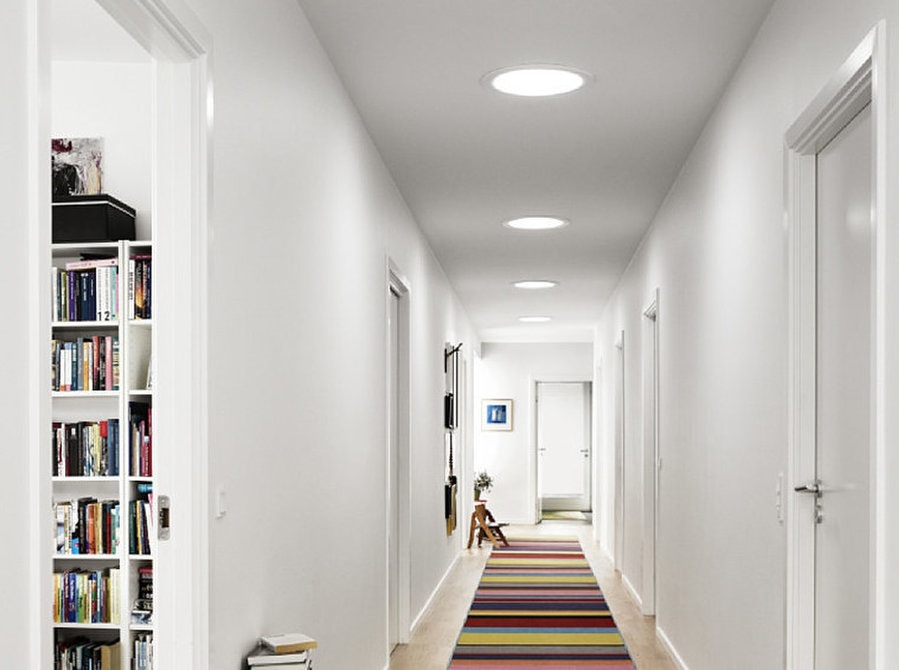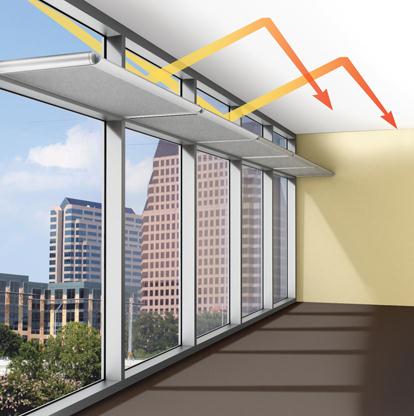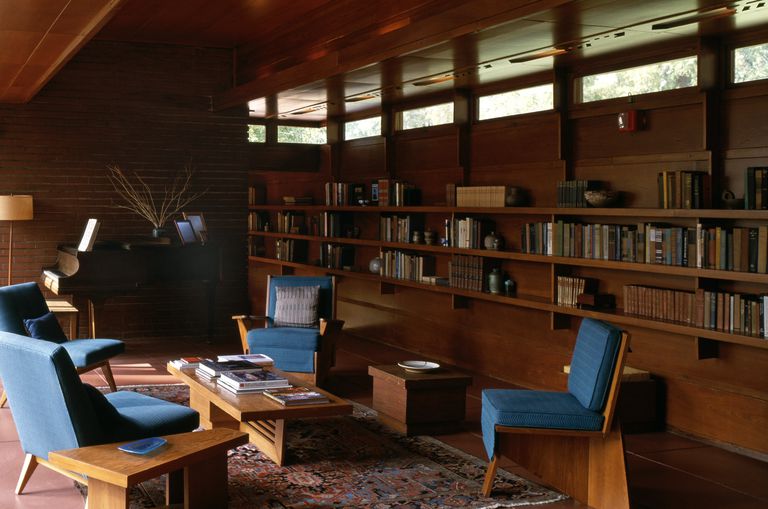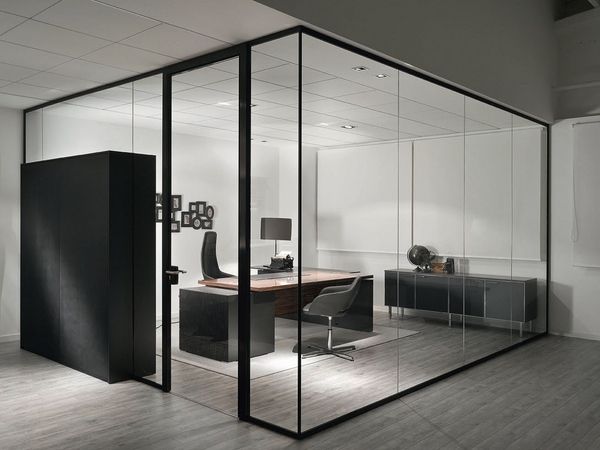Most people spend 85%of their time indoors — inside homes, offices, schools, colleges, commercial or industrial buildings. And another average time of 6 percent is spent inside an enclosed vehicle. But what is this doing to the health of the inhabitants? An increasing number of sick people with deadly diseases like cancers, heart diseases, diabetes, depression, and weight gain. Poor sleep, vision issues lower productivity, and constant mood swings are all gifts of lack of exposure to natural lighting and fresh air.
Over the past 2 years, there has been an outbreak of different reports from the World Green Building Council, Human Spaces, and the International Well Building Institute highlighting the importance of connecting with natural elements of nature. These reports have brought together a wealth of academic research on how the company of natural elements can promote health, well being, and productivity of human beings. Can you guess which element is the #1 wanted
Natural Light In Architecture
In architecture, one of the best ways to determine whether its good or not is by evaluating how natural light is handled thru the space it illuminates. Archeologically, “Natural Lighting” in architecture is one of the biggest complaint areas from building occupants. It wouldn’t be wrong to say that today’s building architecture is turning as dark as a tomb and to add a tinge of lighting, artificial fluorescent and LEDs are blasted upon.
Well again, both natural and artificial lights are important elements in architecture. But, considering the benefits of natural light for its inhabitants, designers or architect need to allow more and more natural light in.
In addition to the health benefits, natural light is one absolutely awesome and ever-changing tool which can totally transform the effect on the look and feel of the building structure. Sensitive use of natural light plays a key role in creating an environment that is warm and at the same time inviting. A poorly lit room can make a room feel blunt and cold. Also, light can be energizing or calming, it can add a sense of space or a sense of intimacy to the place.
Light defines the character of a space and an individual’s perception of it. The level of brightness, the system in which light is distributed and the shadows it casts all together play a huge role in architecture. Different types of rooms demand different lighting solutions; hence the starting point needs to begin with the form and function – and then follows the when and how each room is used. The overall dimension of the space, the color choices, the furniture and materials, the surface finishes and the time of the day – every single element influences and effects the way light reacts in a living space.
Lastly, we cannot forget the energy saving factor, with letting the natural light in one can save a lot on the energy bills.
7 Benefits of Using Day-lighting Systems In Architecture
Why should you incorporate natural light
1. Spacious Rooms
For centuries, designers and architects have known that spaces lit with natural light tend to feel more expansive and spacious than the ones lit by artificial lighting. Focusing on natural light enables you to create a space which feels much bigger and comfortable than its counter parts which are artificially lit.
2. Truer Colours
Natural light gives an extra edge to the colors present indoors by making it look more profound, natural, and far more pleasing. From gunmetal gray of the kitchen counter to shiny leather on the sofa, every single color looks much better when its lit by natural lighting.
3. More Energy
Natural light has major paybacks for your energy levels.Several studies have noticed a link between exposure to natural light(especially in home, schools, and office) and steady energy levels during the day. According to the Sacramento Municipal Utility District study, people perform 10-25 percent better on tests of mental function and memory recall when they work in a room with natural light, compared to those with artificial ones. Naturally illuminated work spaces mean even after a busy long day the inhabitant always comes back home with more energy, a greater level of mental and physical clarity.
4. Fresher Air
Did you know, lack of natural light can cause staling smell? Yes, that uncomfortable stale smell that most of us notice on entering a dark, damp home/office is a result of inadequate natural lighting. Large window openings or skylights, helps a home remain free of mild, mildew and dangerous bacteria which are often the cause of the unwelcoming smell. Allowing fresh air confirms pure air inside a home.
5. Increased Comfort
Living spaces lit using natural lighting are more comfortable in comparison to its counterparts that are blasted with artificial lighting. Infact, over-illuminating spaces with artificial lighting is one real issue which often leads to serious health issues like headaches, feelings of discomfort,and anxiety.
6. Timeless Style
Offices, schools and home from the 1980s and 1990s were energy-inefficient ones that bring us to one question, how dated these artificial lighting innovations are? In addition, until the year 1995, light levels weren’t a serious issue – with obvious effects, isn’t it? Over the last20 years, the interior design and architecture community has seen the dated look of the artificially lit environment with evident ill effects on human health. Furthermore, as technology gets more advanced, energy efficient lighting systems are bound to upgrade, and as one upgrades (for e.g.Fluorescent lamps to LEDs) the other outdated. Naturally lit homes mean timeless style and beauty which will never out-date.
7. Lower Expenses
One of the major focus areas of many designers and architects in designing offices, schools, and homes is energy-efficiency.Basically, it’s a battle to achieve the lower levels of energy consumption, but if achieved successfully, it becomes something that they pride on. A home that is naturally lit, is healthy, timeless, and yes demands minimal spending on maintenance and electricity.
Not convinced? When you see research findings, it becomes easier to see why:


Image Caption:A summary of the benefits of natural light. Image: Cohere
Considering the array of benefits, it’s quite a common desire to incorporate as much natural light into the living or work areas as possible – But it’s not really easy to achieve. Here, we take a look at five tricks.
1. Skylights


Source
The scarcity of land has made the space for proper ventilation and lighting restricted. Apart from that, sometimes, homeowners consider safety reasons and choose to have fewer window openings in the walls. In such conditions fixing skylight in the roofs is the best solution as Skylights bring natural light and air into areas that normally wouldn’t have windows.
According to a study by VELUX America, building structures that utilize skylights, in combination with vertical windows, tend to be more energy efficient. Skylights help in making a major contribution to energy efficiency and comfort, it can admit more than three times as much light as a vertical window of the same size and distributes the same evenly resulting in savings in energy and improving the overall visual comfort levels of the occupants.
Related:
Skylight – A Greener Way To Reduce Darkness In Homes
DifferentTypes Of Skylight And How-To Choose The Right One
2. Sun Tunnels


Source
Many may not know this but sun tunnels, sun tubes, light pipes, or tubular day lighting device – whatever you know them as – can transform a windowless or dark room into an area full of natural light and energy. This Is one fantastic addition to a home area where it hasn’t really been possible for natural light to enter before. They efficiently channel down sunlight from the roof through a highly reflective tube into the necessary room.
These sun tunnels can be installed on both flat and pitchedroofs and allow natural light to flood into the rooms where it’s most needed. Whencompared to the skylights where it is difficult to control the quantity andquality of incoming sunlight, sun tubes have glazing which tends to reduce the harmfulglare and inconsistent light patterns and screen infrared sun rays which canharm the interior elements (like, furniture and fabrics).
3. Light Shelfs


Source
Windows receive huge amounts of energy from the sun, but most of it gets wasted on one single area. In addition to this, direct sunlight causes harmful glare on the computer monitors and desks. Such light can be a total nuisance if it’s concentrated in one single spot, but if its effectively and equally distributed to all parts of the room it becomes extremely useful. This is exactly where light shelves help.
The light shelve is a horizontal, shelf-like element that bounces visible light up towards the ceiling, which further reflects it down deeper into the interiors of a room. Basically, it doubles the real depth of incoming light. Also, in spaces where they aren’t too effective at bouncing light into space,it can help to reduce the direct heat gain and glare.
4. Clerestory Windows


These are large windows or a series of small ones along the top of a structure’s wall, generally at or near the roof line. Clerestory windows are a kind of “fenestration” or glass window placement that is found in both commercial and residential construction. Typically, these area type of non-traditional window which has excellent natural lighting and ventilation benefits.
Historically, such windows were used in churches where the upper level would have a row of windows which would illuminate the indoors that otherwise would have been tall, dark stone structures, which quite a common element in energy-efficient buildings. Owing to their location high up, they efficiently pull in a lot of natural light and breezes into space without compromising privacy. These can also play a critical role in the passive cooling of the living areas.
5. Glass Doors


Source
Another appreciated way to let in more light into a living space is to reduce bulky furniture and solid doors which block light from passing through it. The idea is to replace the solid doors with the glass ones or even having openings with no door. This allows light to transmit from one area to the another.
Unquestionably, it isn’t appropriate to use transparent materials in all spaces, but blocking up with solid materials isn’t the way out. Think about translucent or frosted glasses, these work great at providing a surprising amount of light into spaces which earlier were closed or blocked by solid barriers. It is also important to consider that glass tends to reflect light, and even opaque glasses can intensify light reflections.
The Case Is Clear
Apart from the view, there is so much more to a window seat. Given the demands of modern society and business, having environments which can bring out our best is becoming more and more important. In fact, it would be wrong to say, getting natural light distribution and justness right is the key to creating living and workplaces brimming with well being, creativity, and productivity.
Curated by a building expert from Wienerberger India










